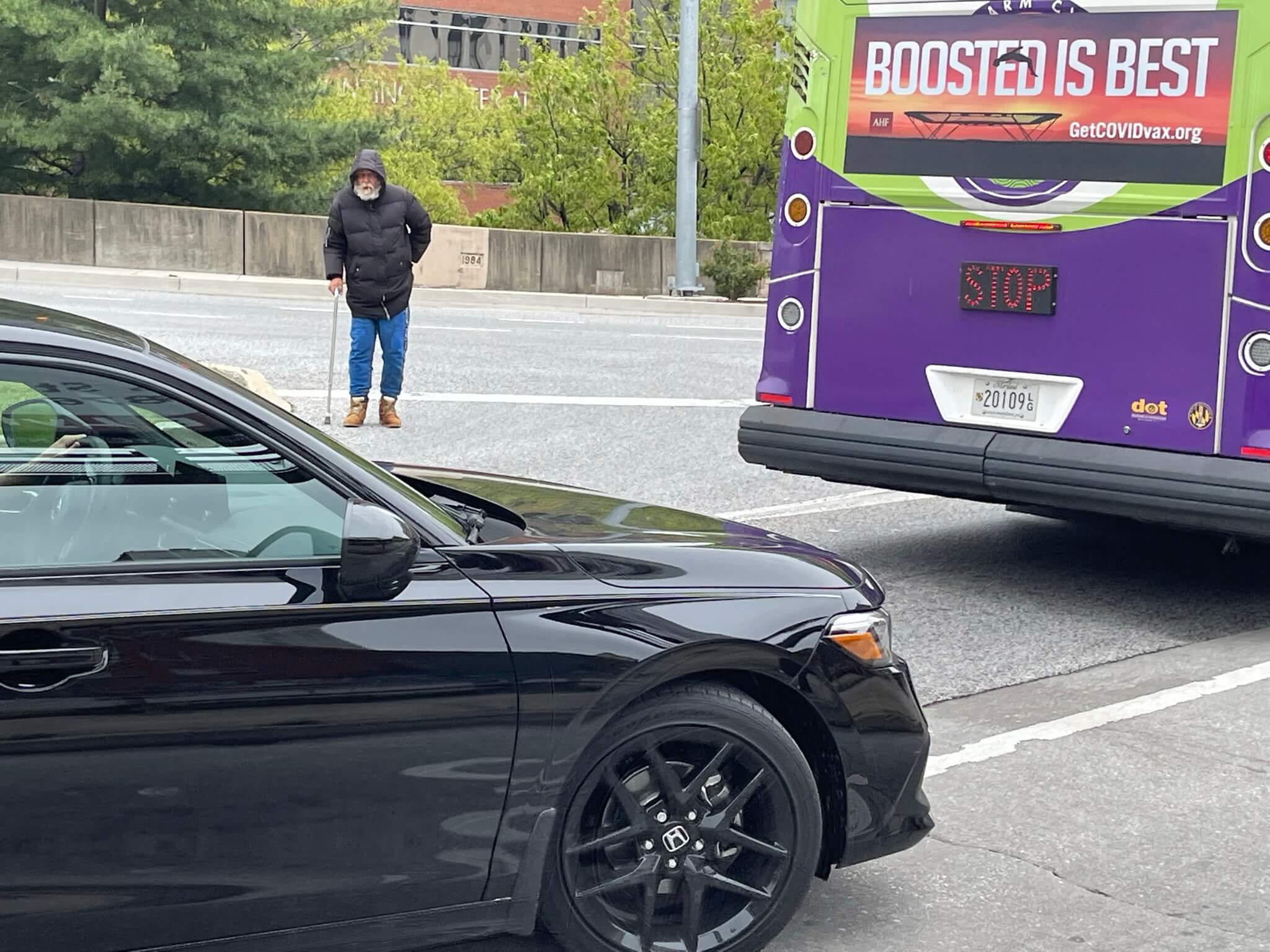What Happens if a Pedestrian Caused an Accident?

When you’re on the road, you have to be wary of not just the other motorists around you. You must also be mindful of the people on the street because they can cause a pedestrian accident.
How can something like that happen? Some of the time, the pedestrian’s reckless attitude is the cause of the accident.
In an attempt to avoid a pedestrian who just carelessly stepped onto the road, you may have swerved your vehicle out of the way. While doing so, you may accidentally hit a pole or barrier nearby.
The impact of that kind of collision can be pretty strong and you could end up seriously injured. Your car is probably not in good condition either.
The negligent actions of the pedestrian were the root cause of your accident. They must be held responsible for that. Find out how you can take legal action against them by continuing with the rest of this article.
How Do Pedestrians Cause Car Accidents?
Motorists hitting pedestrians are unfortunate accidents that can happen from time to time. Whenever they do, the guilty motorist must be held fully accountable for what they did. They must cover the cost of treating the pedestrian’s injuries and deal with any additional fallout of the incident.
In many cases, careless motorists are the ones guilty of running into innocent pedestrians. Still, the opposite may be true occasionally too. If that happens, can you point to a pedestrian’s actions as the reason you crashed your car?
Although a pedestrian causing a car accident may seem unlikely at first, it can be in some scenarios.
An accident could occur because you were trying to avoid hitting a pedestrian. They may have behaved in a way that you did not expect, so you swerved at the last moment to avoid them. Doing so may have led to you hitting some barrier nearby or another vehicle.
But, how exactly do pedestrians cause vehicular crashes? Let’s go over the ways pedestrians can potentially cause accidents below.
Engaging in Jaywalking
As a motorist, you get used to certain things while driving. You recognize the areas where traffic slows down or speeds up. You can also tell which roads are prone to flooding.
When it comes to pedestrians, you also get used to where they will be. If your normal route to work includes crosswalks, you know pedestrians will be there. That is why you have developed a habit of slowing down before reaching a crosswalk.
Unfortunately, not all pedestrians follow the rules to where they should be crossing the road. Instead, they engage in the habit of jaywalking and effectively endanger themselves as well as the people around them.
Jaywalking occurs when pedestrians cross the street without using the available crosswalk. Things get dangerous when pedestrians are reckless about their jaywalking. They may walk onto the road without taking a moment to consider that there could be vehicles nearby.
If the pedestrian accident you were involved in features a case of jaywalking, you could avoid the blame for it. The pedestrian accident liability in that scenario could fall on to the person who was jaywalking.
Walking while Intoxicated
We all know that drunk driving is dangerous, and you cannot ignore how risky crossing the street while intoxicated is, as well.
An intoxicated individual may become more oblivious and reckless, and that is a dangerous combination. They may not be aware there are vehicles nearby when crossing the street. They could also be aware of those vehicles and not care.
It is tough to judge the actions of a drunk pedestrian from the driver’s seat of your vehicle. Often, you can tell if someone is about to cross the road by their body language or signals, they flash. Intoxicated individuals are unpredictable, and they do not tend to communicate well.
If you accidentally hit a pedestrian because they were drunk and walked in front of your vehicle, that could be a valid defense on your part.
Walking while Distracted
Mobile devices are great. It is hard to argue that they have been anything but positive innovations when you consider the accessible features.
Still, it is not great when people get so absorbed by their devices that they disengage from the world around them. They become so distracted that they do not realize that there are other people and vehicles nearby.
A pedestrian using their smartphone while crossing the street may move at the wrong time. Because of their unexpected movement, you may hit them accidentally.
Drivers are obligated to watch for pedestrians on the road. At the same time, pedestrians must be mindful of their surroundings too.
Ignoring the Traffic Signals
Instead of crosswalks, some areas rely on traffic signals to control the flow of pedestrian traffic. Pedestrians are obligated to follow those traffic signs. If they do not, they could get into trouble.
Notably, those traffic signals may also help explain why some pedestrians engage in jaywalking in the first place.
Per this article from Arizona State University, traffic signals that fail to accommodate the rate at which pedestrians want to travel can encourage them to engage in rule-breaking. To be more specific, those slow traffic signals may explain why people willingly ignore the rules. From their perspective, they would rather break the law than be delayed.
Of course, it does not help that jaywalking is often not treated as a big deal. Even so, the pedestrian is at fault for the accident if they ignored the traffic light while crossing the street.
Pedestrians Risking Their Safety
Let’s be clear here. Any kind of pedestrian accident can be dangerous.
The human body cannot withstand the impact of a moving vehicle. A pedestrian can get badly hurt if a vehicle hits them.
However, many pedestrians are still willing to risk their safety regularly. That is probably because they are unaware of how risky jaywalking is. They assume they will be fine so crossing the road without using the crosswalk or acknowledging the traffic signal is not a big deal to them.
What they fail to account for are the motorists on the road. Since motorists look for pedestrians in certain areas, they may be caught off guard by someone jaywalking.
You may even spot pedestrians who are willing to risk being apprehended by a police officer so they can cross the road. Pedestrians need to know that they are risking a lot by jaywalking. They may even be at risk of being liable for a car accident due to their reckless actions.
How Do You Prove That a Pedestrian Caused an Accident?
By now, it should be clear that pedestrians should not always be absolved of blame when it comes to car accidents. If they are being irresponsible while crossing the street, they need to be held accountable for what happened.
It is important to know that you can sue a pedestrian if you believe that they caused you to crash your vehicle. Suing may even be necessary. Car accidents can cause serious harm and you may need compensation for your medical bills and other losses.
With all that said, getting the court to side with you in that kind of case can be tricky. They may be inclined to side with the pedestrian who was in a more vulnerable position when that accident occurred.
If you want a better chance of winning your lawsuit, you need to follow the tips detailed below.
Call for Emergency Assistance
Whether you are injured or not, the first thing you should do is to call for emergency assistance. Place a call to the police and ask them to visit the scene of the accident.
Calling the police is crucial because you want them at the scene while the incident is still fresh, so they have an accurate account of the circumstances. Have them create a record of the incident and use that later to bolster your lawsuit.
Gather Evidence
Instead of sitting in your vehicle and waiting for the police, you can use that time to start collecting evidence.
Take photos of your vehicle and note any damage it has sustained. Those photos will serve as evidence when you claim that your vehicle sustained significant damage.
You should also look around and check for cameras nearby. If you find some cameras, you should check if they have footage of your accident. The footage should further drive home the fact that you were not at fault for the accident.
A lawyer can also help you obtain that footage. You can circle back to that later if you are having a hard time gaining access to the captured videos.
Beyond the photos and videos, you should also gather testimonies from witnesses at the scene. Speak to witnesses willing to talk and ask for their account of what happened. You can record their testimony using your phone if they are open to that.
Remember to ask the witnesses for their contact details before leaving the scene. You may need to contact them later, so do not forget to ask for those valuable details.
Do Not Accept Blame for the Incident
At some point after the accident, you will probably have a conversation with the pedestrian responsible for what happened. During that conversation, the pedestrian may attempt to get you to accept the blame for the incident.
Do not take that bait.
Sharing your contact details and other general information with them is fine but leave it at that. If they insist on getting you to talk about the accident, you can tell them to speak to your lawyer.
Speak to the Police
Lastly, you should wait for the arrival of the police so you can talk to them. You do not want the other party to talk to the police without you present.
If that happens, they can shape the narrative of the incident and paint you in a bad light. You need to be there to dispute any inaccuracies by the other party.
Waiting for the police is also smart to get their contact details and share the evidence you gathered.
Can You Receive Compensation if a Pedestrian Caused Your Car Accident?
Suing a pedestrian who caused your accident is an option. That means receiving compensation for the incident is also possible.
Does that also mean that you are likely to receive compensation for the incident? Well, that question is a bit harder to answer.
The state of Maryland can make it difficult for plaintiffs to receive compensation since the state follows the principle of contributory negligence.
How Contributory Negligence Can Affect Your Case
According to Cornell Law School, contributory negligence dictates that a plaintiff cannot receive compensation if their negligence contributed to the accident. That is the case no matter how small the plaintiff’s part was in causing the incident. If you are even one percent at fault for the accident, the court can decide against offering you compensation.
Most states have abandoned the usage of contributory negligence to determine the awarding of damages in their cases. Many of them now use comparative negligence because they believe it is the fairer option. Unfortunately, Maryland has yet to change in that regard.
Plaintiffs have a high bar to clear if they want to receive compensation in their lawsuits. That is an even greater challenge in pedestrian accidents. You will need the services of a highly skilled lawyer if you want to receive compensation for what happened.
Proving that a pedestrian is at fault for the accident you were involved in can be an enormous challenge. We at Leppler Injury Law are willing to take on that challenge on your behalf. Contact us today and let us work on your case so you can receive the compensation you need.
